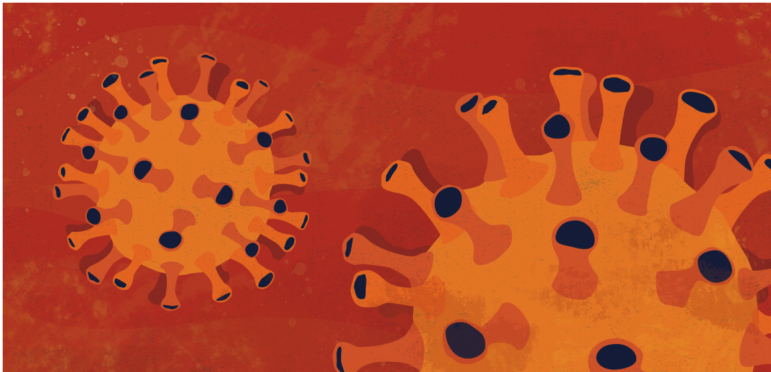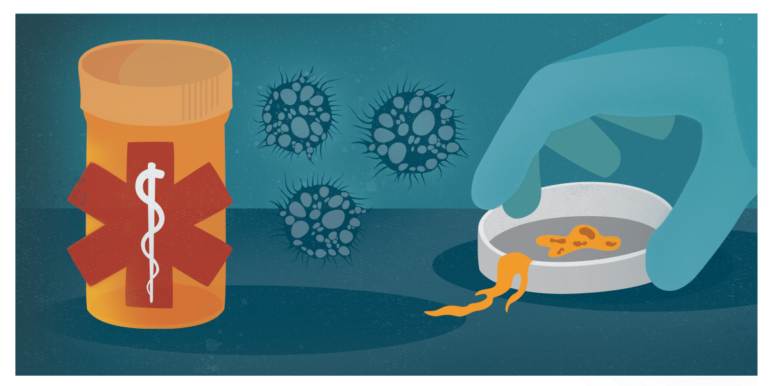

Health and Medicine Guide: Introduction
Read this article in
Guide Resource
Investigating Health and Medicine
Chapter Guide Resource
Health and Medicine Guide: Preface
Chapter Guide Resource
Health and Medicine Guide: Introduction
Chapter Guide Resource
Health and Medicine Guide: Chapter 1
Chapter Guide Resource
Health and Medicine Guide: Chapter 2
Chapter Guide Resource
Health and Medicine Guide: Chapter 3
Chapter Guide Resource
Health and Medicine Guide: Chapter 4
Chapter Guide Resource
Health and Medicine Guide: Chapter 5
Chapter Guide Resource
Health and Medicine Guide: Appendix
INTRODUCTION
This guide focuses on medicines and medical devices. It aims to provide journalists with the tools and knowledge to independently assess the evidence, critically appraise the risk-benefit ratio of any given product or policy, and expose corruption and malpractice. It can be read as a textbook, one chapter at a time, or used selectively to support your work.
Investigating behind-the-scenes is consuming but rewarding. As we’ll discuss in Chapter 2, combining the methods and standards of muckraking and Evidence-Based Medicine (EBM) can be highly effective. EBM, defined as “the conscientious, explicit, and judicious use of current best evidence in making decisions about the care of individual patients,” has been constantly revised to include a wider public health approach. But as Students 4 Best Evidence, a network of students from around the world who are interested in learning more about evidence-based health care, put it: “It’s about asking the right questions and using the best research evidence to answer those questions.” EBM is an approach that matches the ethics and standards of investigative journalism.
In his book “The Rise and Fall of Modern Medicine,” James Le Fanu identified 12 definitive moments of medical innovation: the discovery of penicillin, cortisone, streptomycin (an antibiotic), chlorpromazine (an antipsychotic drug), intensive care, open-heart surgery, hip replacement, kidney transplants, the control of hypertension (and the prevention of stroke), the treatment of childhood cancer, “test-tube” babies, and the clinical importance of Helicobacter, a type of bacteria. They are among medicine’s most remarkable successes of our modern times. But, as oncologist Vinay Prasad put it in his podcast “Plenary Session”: “Some of our interventions, some of our surgeries, some of our pills, some of our procedures are indisputably of benefit. They are the right pill at the right time,” but also, medicine is paved with myths, and it’s crucial to dispel them. Because, as John P. A . Ioannidis pointed out in the same podcast, “innovation is slow and infrequent, science is difficult . . . and the medicalization of society is becoming a major threat to humanity.”
Health care and medicine, of course, affect each and every one of us. But contemporary public conversation is truly contradictory. On the one hand, medical triumphs are celebrated and even hyped; on the other hand, problems and conflicts of interest in healthcare and medicine have never been so obvious. Becoming knowledgeable about these critical issues is the first step to becoming a good medical investigative journalist.
The pharmaceutical industry’s influence is pervasive and medical marketing is skyrocketing. Around half of the world’s population has to deal with limited access to essential medicines, such as antibiotics and vaccines, whose distribution depends on donor agendas. Counterfeit drugs and the black-market trade in pharmaceuticals are ubiquitous. In richer countries, over-diagnosis, over-detection, and over-treatment turn citizens into patients unnecessarily, and put health care budgets under pressure as states underwrite the costs of expensive new drugs with questionable efficacy. True breakthroughs remain extremely rare. The French independent drug bulletin Prescrire’s The Golden Pill, an award for therapeutic advances, can’t be warranted most years. Notably missing in the list of award winners are new oncological drugs, even though they are routinely associated with the use of superlatives in cancer research and journalism. As Bloomberg reporter Peter Coy put it in this article: Too Many Medicines Simply Don’t Work. Also, consider that practices used sometimes for decades are, at a later point, shown to bring no benefit to patients and end up being dismissed, a phenomenon called “medical reversal” (“Ending Medical Reversal,” Vinayak K. Prasad, Adam S. Cifu).
In this field, you may end up misreading — and thus misrepresenting — reality if you are looking for the usual “bad guy.” As soon you gain more experience, you realize this view is too simplistic. When you really dig, it will become apparent that many less obvious players, those who appear to be on the side of the patients, may also have their own, often complex, agendas. The marketing strategies of the pharmaceutical industry are highly sophisticated and go well beyond giving financial support to doctors or funding trips and other freebies. Although this continues on a smaller scale than in the past, new strategies have been developed to influence prescribers and public health policies. Big Pharma knows, for instance, that giving generous funding to patient advocacy organizations can be highly rewarding. They will fight for a new drug to enter the market on an expedited basis, or for governments to pay for expensive medicine that is not necessarily effective. It is also known that the media will relay their message, focusing on the social justice angle and victims’ stories. This is because journalists tend to look at “victims” and “patients” as the “good guys.”
To dig deeper in this field you need to investigate the big picture. Many players in the global health market are keen to influence our work: health authorities, pharmaceutical manufacturers and medical devices companies, insurers, academic institutions, and nongovernmental organizations. They all have a message they want us to convey, and their actions can have a considerable impact on public health policies, sometimes ending up squarely complicit in furthering vested interests that have negative consequences for individuals and society.

















